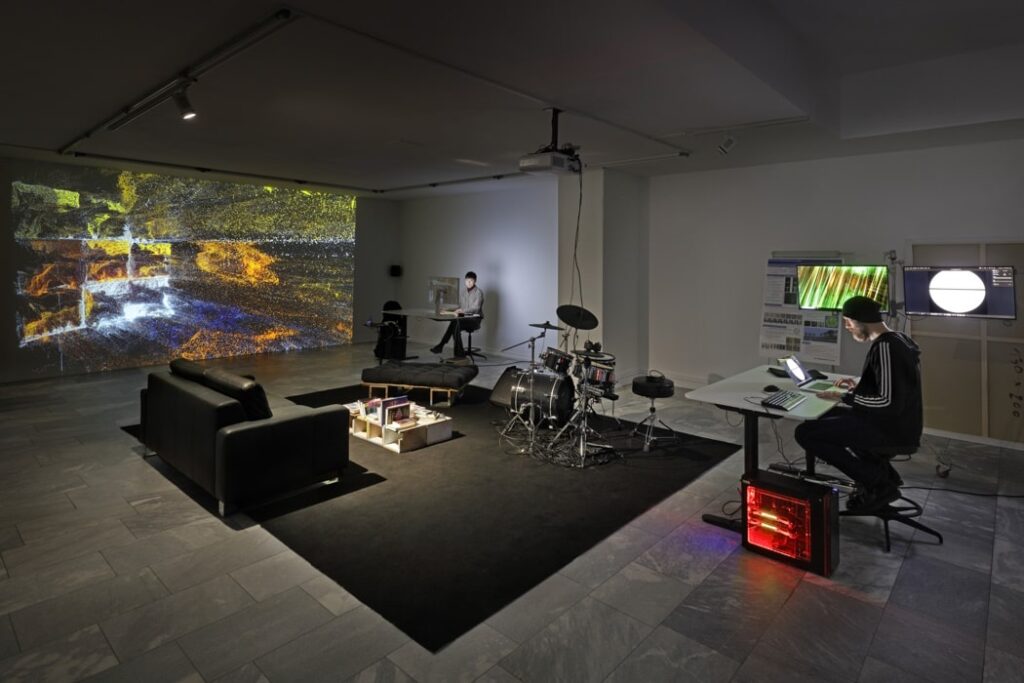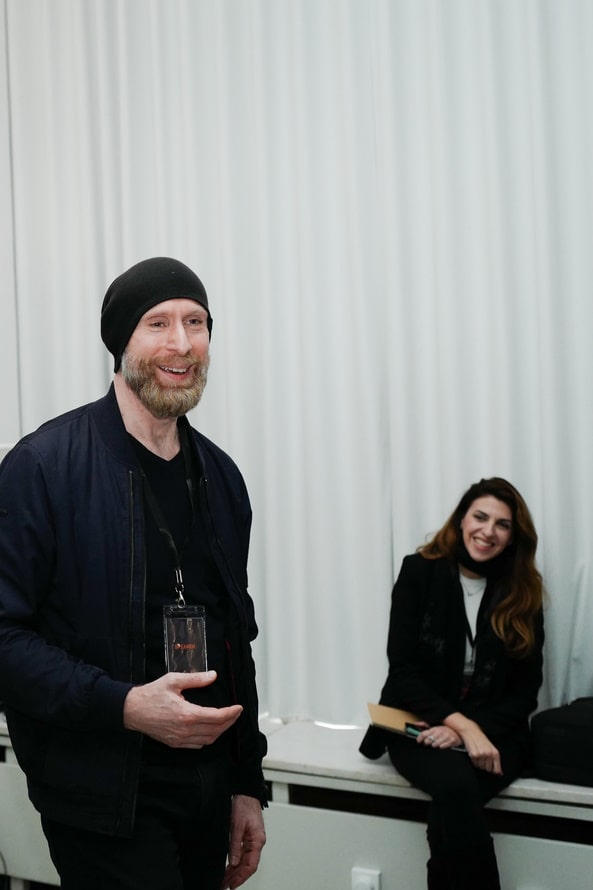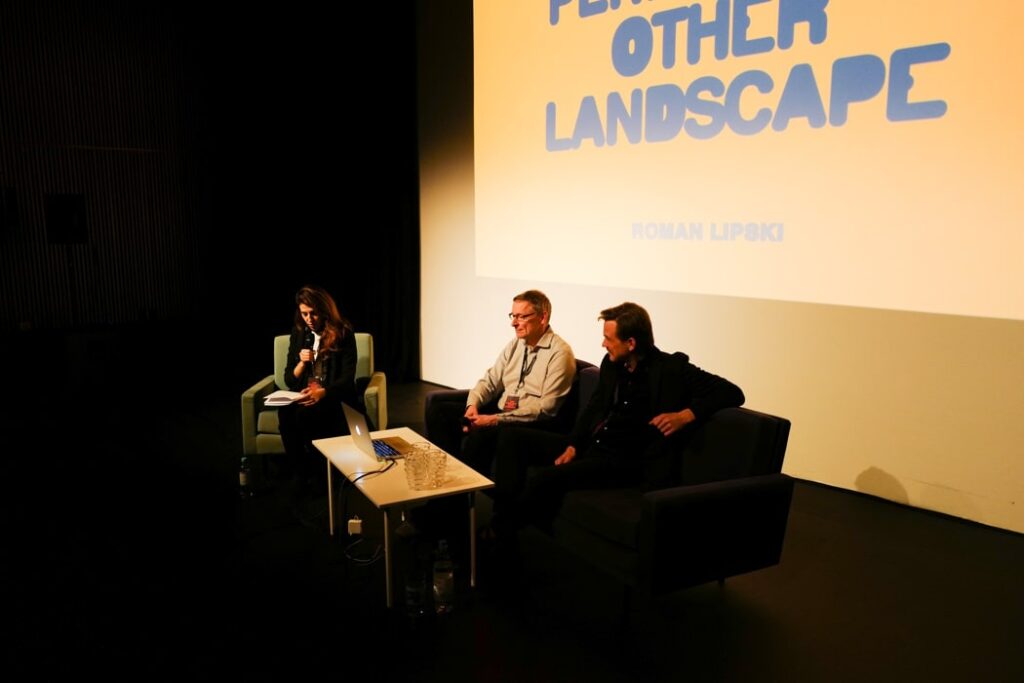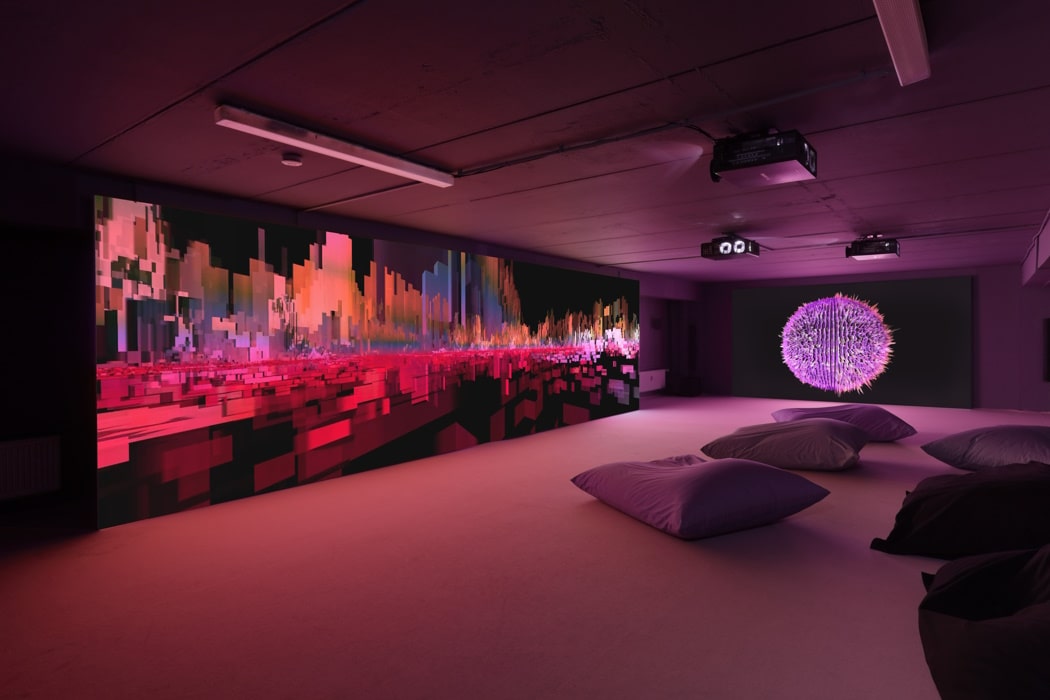Die von Dr. Laura López Paniagua kuratierte, experimentelle Ausstellung “This Permanent Other Landscape” mit neuen Kunstwerken des Landschaftsmalers Roman Lipski fand von Februar bis März 2023 in der Julia Stoschek Collection in Berlin statt. Die Ausstellung untersuchte die Verbreitung digitaler Technologien in der Kunst und nutzte insbesondere Medien wie AR, VR und KI. Ihr Ziel war es, die Konnektivität zu fördern und die Demokratisierung der Kunstwelt voranzutreiben. Roman Lipskis Experimente mit der Quantum Blur (QB)-Technologie, die digitale 2D-Bilder in 3D-Topografien verwandelt, wurden im Video-Raum der Julia Stoschek-Collection durch Film- und VR-Erfahrungen präsentiert. Die Ausstellung stellte Lipskis Entwicklung als Landschaftsmaler dar und umfasste seine früheren Acrylbilder auf Leinwand, sowie aktuelle KI-Experimente und Arbeiten, die Quantencomputer nutzen. Der Künstler befasst sich mit dem Konzept der multiplen Dimensionen und Realitäten und lässt sich dabei u.a. von Philip K. Dicks Schriften und der Many-Worlds-Interpretation der Quantenmechanik inspirieren. “This Permanent Other Landscape” bot eine Plattform für die Erkundung des Potenzials digitaler Technologien in der Kunst und regte gleichzeitig Diskussionen über das Zusammenspiel von Kunst, Wissenschaft und den sich ständig verändernden Landschaften unserer Realität an. Lesen Sie hier das kuratorische Statement von Dr. Laura López Paniagua zur Ausstellung.
Abb. oben: Ausstellungsansicht, Roman Lipski
(in englischer Sprache) Since the issues and questions that This Permanent Other Landscape raises are interconnected and collapse into one another, instead of forcing them into a consecutive, linear narrative, I will refer to some images that have accompanied me while thinking about this exhibition, and attempt to approach them from these starting points.
The Electronic Hydra
According to Greek and Roman mythology, each time the sea serpent known as The Hydra was beheaded, it would grow two new heads, thus multiplying its horrific power. Curators Hans Ulrich Obrist and Daniel Birnbaum resort to this ancient monster to describe the organic proliferation of digital technologies in art, which is rapidly gaining an inescapable ubiquity. Despite the nightmarish flavour of the metaphor, they regard these developments as positive, since digital mediums such as AR, VR, and AI allow for unprecedented simultaneous connectivity among art, artists, and the public, and hold the potential for a more democratic art world – without depending on well-funded institutions that can put up expensive exhibitions, “this could be art for all”.

It seems like Obrist and Birnbaum are right regarding the mushrooming of digital media, but though this seems to be the landscape to come, as of today, these art forms are at a very early stage of development and thus, in a phase of experimentation and discovery of their potentials, possible outcomes, and consequences. This brought about one of the leitmotifs of the show: to showcase the birth of a new art form created through quantum computing, focusing on the display of the process rather than on finished works.
When I visited Roman Lipski at his studio for the first time, he had already been experimenting with Quantum Blur (QB) technology for about two years. In simplified terms, the process he followed consisted of subjecting 2D digital images to the QB process, which would result in a 3D topography. At the time, he was taking snapshots of these 3D landscapes to produce 2D prints, but he was considering using other mediums to represent the three-dimensionality of the altered images. My proposal to him was to use this exhibition to metaphorically jump into this third dimension together: we would show his first attempts to explore these 3D quantum landscapes through film and VR. We would transport his studio to the Julia Stoschek Foundation, and he would work there with the other team members for the duration of the exhibition. This would show the complex processes behind these works, and put the focus on the experimental value of these nascent art forms. The curatorial structure of the show was meant to serve as a trampoline for Lipski to attempt something new, and also, as a safety net – in case these experiments failed, the exhibition would still be coherent because error as much as trial is an integral part of experimentation.

Philip K. Dick – Landscapes that Don’t Fall Apart Two Days Later
A second leitmotif for the exhibition was portraying Roman Lipski as a landscape painter. The use of these technologies is so newsworthy that it sometimes eclipses the artist and their trajectory. It was important to show that Lipski has a twenty-year-old artistic career in which he has evolved from easel painting to experimentation with AI, to his current works using quantum computing. At the entrance of the first exhibition hall, an archive of Lipski’s acrylics on canvas leaned against the wall, as a trace of this artistic path. The central room was dedicated to the ghostly presence of the AI Muse Machine (2011), a key piece of Lipski’s experiments with AI, in which a neural network was trained to potentially create infinite iterations of a landscape captured by the artist in 2016 (Winding Road in LA). While the final room displayed the first voyages through QB landscapes in film, the first room replicated Lipski’s atelier with the working stations of quantum software engineer Marcel Pfaffhauser and composer Kimin Han. This disposition was intended to display a comprehensive view of the artist’s career up to the present rather than the anecdotal use of a particular medium.

While working on the show and observing Lipski and Han generating these multiplying landscapes that emerged from the blackness of the virtual space, I kept wondering where these universes are located. Where is that darkness? Is that darkness the edge of that universe? Is it the edge of our universe? With all our new, super-powerful computational skills, are we really shifting into or creating other dimensions of reality? It brought to mind Philip K. Dick’s reflections on landscape in How to Build a Universe that Doesn’t Fall Apart Two Days Later (1978). Dick explains that the universe or landscape we perceive is defined by a timeline that goes from the past to the future, but that is traversed orthogonally by a multitude of other landscapes that we could travel through if he hadn’t forgotten how to. Could this theory be linked to the Many Worlds Interpretation brought forward by quantum mechanics that implies that there are most likely an infinite number of universes? This sentiment of uncanny otherworldliness inspired how the exhibition should feel like.
Salvador Dalí’s Corpus Hypercubus (1954)
Since the questions, quagmires, and paradoxes that Lipski encounters approaching these hybrid, digital-physical landscapes belong to a broader discussion that society is facing with the new technological statu quo, the exhibition seemed the perfect space to make this discussion public. A series of experimental lectures and open discussions were held featuring Lipski, Han, the “QB Team” (a group of IBM researchers and quantum software engineers), as well as professors of theoretical physics and art history, and professionals dealing with these new forms of art.

Holding a transdisciplinary forum between art and science is challenging because there is no common language, no lingua franca between them. Nevertheless, there can be a meaningful collaboration between them, and a paradigmatic example of it could be found in Salvador Dalí’s Corpus Hypercubus (1954). In the painting, a figure of Jesus Christ hovers in front of a strange, three-dimensional crucifix: the unfolded net of a tesseract. A tesseract or hypercube is the three-dimensional projection of a four-dimensional cube. It is interesting to remember how Carl Sagan explained this geometrical figure in the legendary television series Cosmos. He referred to the Victorian novel Flatland: A Romance of Many Dimensions (1884), which described a two-dimensional world in which its inhabitants could only perceive flat figures. If a three-dimensional object were to cross it, only “flat slices” of it would be seen. Therefore, from that dimension, the only way to understand a 3D object would be to project it into 2D. Similarly, for us, three-dimensional creatures, the only way to understand a 4D object is to project it into 3D. This is the case with the hypercube.

The parallel disposition of Jesus and the tesseract suggests a conceptual correspondence. Dalí seems to indicate that while the hypercube is the projection of a non-perceptible spatial dimension for humans (the fourth dimension), Christ equally is the perceptible, human materialisation of a divine dimension beyond human comprehension – the way in which humans can know God according to the Christian religion. This, to me, is an example of meaningful interaction between art and science. Art can not only create a perceptible representation of things that are difficult to perceive or non-perceptible. Through reason, and also, through other “organs” like intuition and imagination, art can make us see things in their true complexity. Our different disciplines of knowledge break reality down in order to offer us valid, albeit partial facets of it. Art is able to undo this process, allowing for the perception of the true depth and multidimensionality of the world.






